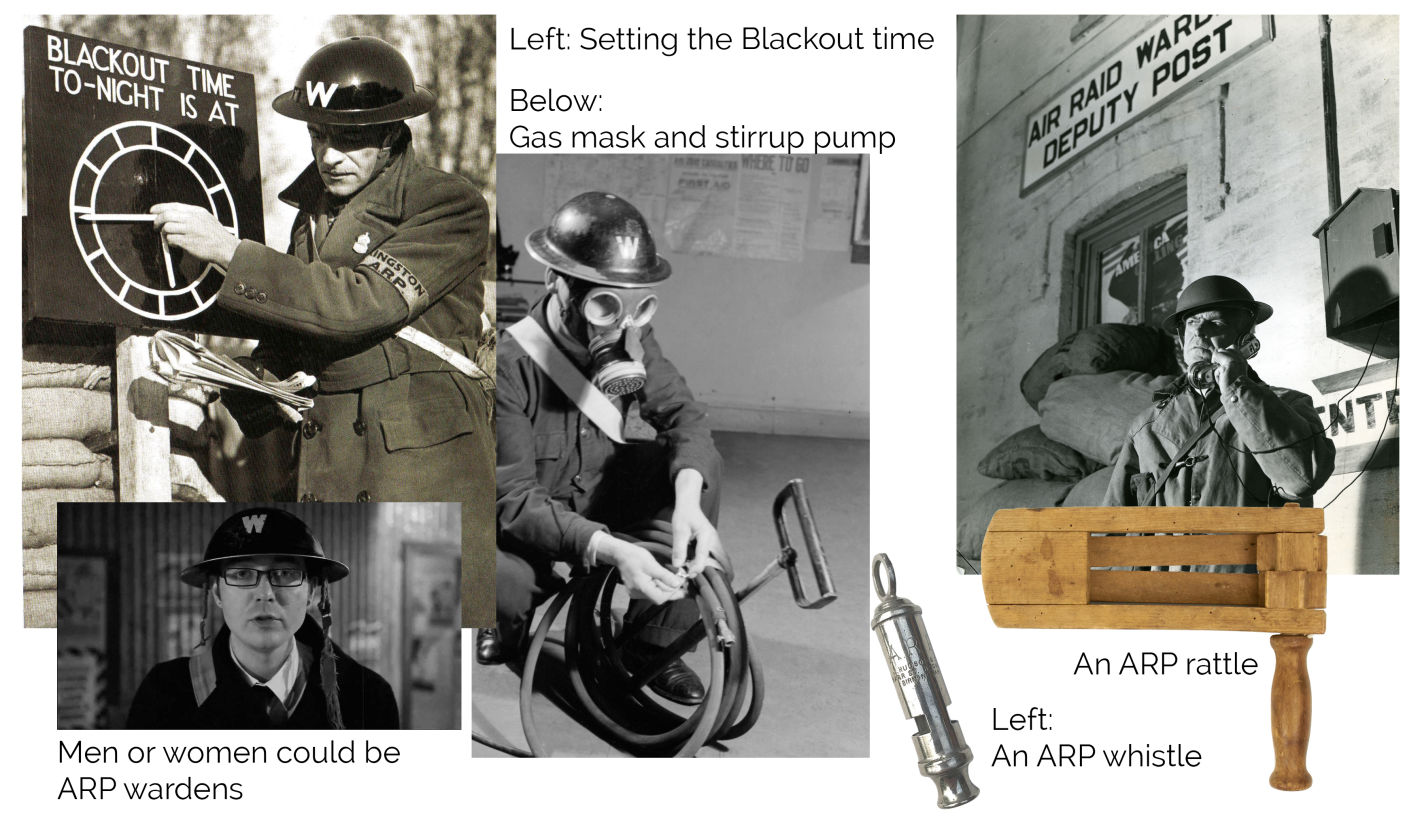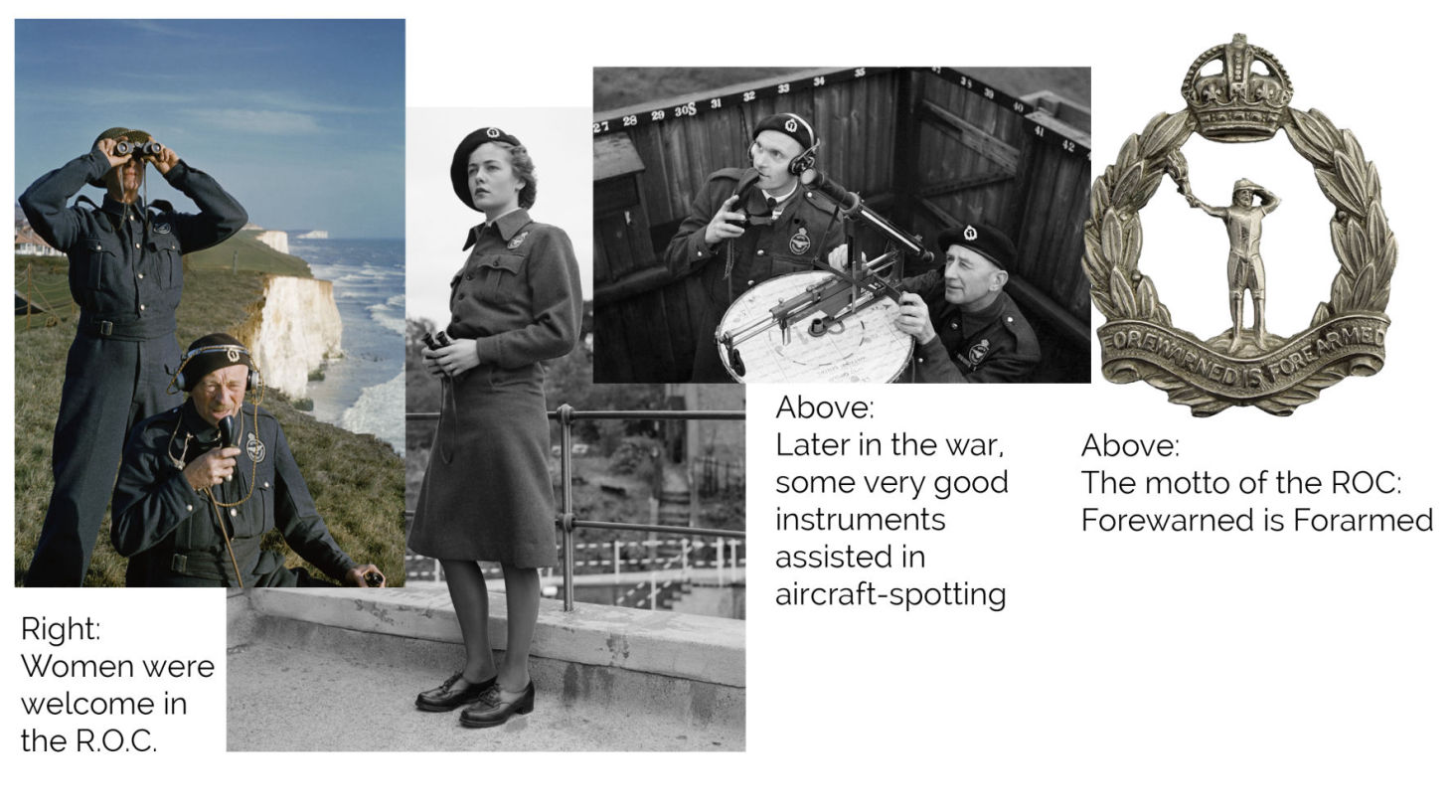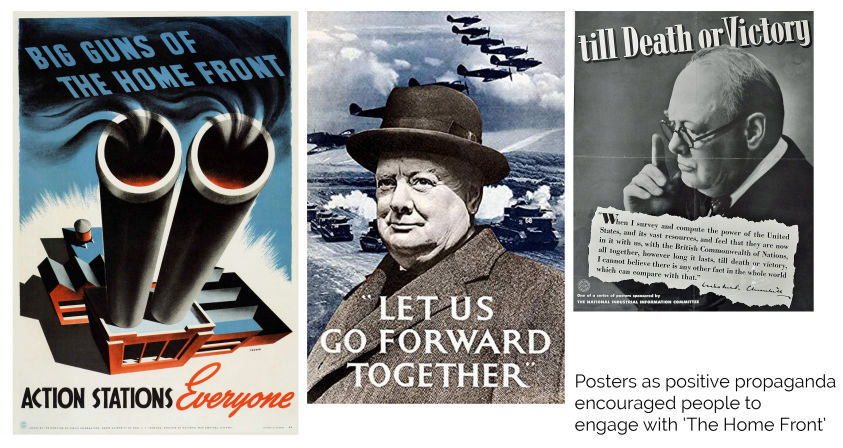
Civil Defence 1
Put that light out!
During the inter-war period, fear of airborne
conflicts grew and grew. The December 1937 Air
Raid Precautions Act made preparations
compulsory for all local authorities. Local
government became responsible for building air
raid shelters, providing gas masks and
recruiting volunteers for civil defence and the
emergency services.
ARP wardens built Anderson and Morrison
shelters, enforced blackout regulations and
distributed 38 million gas masks to the public.
They also kept order in public air raid
shelters, administered first aid and watched for
fires.
Wardens were initially the butt of jokes in the
first weeks of the war when the German planes
failed to materialise. When the bombing began,
however, they were often first on the scene and
went beyond the call of duty to rescue
others.

The Royal Observer Corps
The Royal Observer Corps was created to detect, track, identify and report aircraft over Britain. It was awarded the ‘Royal’ title by King George VI in 1941, in recognition of its valiant work during the Battle of Britain during which the volunteers provided RAF Fighter Command with the numbers, type and height of incoming enemy aircraft.


The Home Front
The concept of a ‘Home Front’ - when civilians are mobilised en masse to support the war effort during a conflict - dates from World War One, as far as the British are concerned. It was re-activated in 1938 during the Munich crisis, when civilians were encouraged to enrol in Air Raid Precautions (ARP) or the Auxiliary Fire Service (AFS).
Anticipating terror from the air
ARP was a reaction to the fear, shared
throughout Europe in the 1930s, of the mass
bombing of civilians from the air. In the 1930s,
government estimates calculated that 600,000
people would be killed and 1.2 million injured
in air raids during a future war.
Evacuation had already been running for two
days by the time war with Germany was announced
on 3rd September 1939. Throughout the war, three
million people were moved beyond the reach of
German bombers, in what became a fundamentally
life-changing event for many. The internment of
German and Austrian ‘aliens’ also commenced at
the outbreak of war, and those considered high
risk were interned immediately. Later, Italian
aliens were ‘rounded up’ under Churchill’s
orders after Italy joined the war in June
1940.
‘Doing your bit’
The nation’s labour was once again mobilised,
and to an even greater extent than World War
One. Half a million women joined the uniformed
services, and millions more worked in the
factories and on the land. Both men (from 1939)
and women (from 1941) were conscripted. Men were
even conscripted into the coal mines - one in
ten of those enlisted domestically.
The regulation of society
Ration books were issued when food rationing
came into force in January 1940. Imported items
including meats, sugar, tea and coffee were
divided equally between all adults and children.
These goods arrived by merchant ship and were
vulnerable to submarine attacks and blockades.
Imported non-food items such as textiles, soap
and petrol were also rationed.
The invasion scare of June-September 1940
caused all road and rail signposts and maps to
be removed. A call for scrap metal to recycle
into Spitfires resulted in the removal of
decorative iron railings surrounding many civic
spaces, and aluminium saucepans were collected
by the million.
Public awareness was heightened by the
protective sandbagging of public buildings and
monuments, and the growth of allotments (3.5
million by 1943) in every spare area of playing
field or village green. The pace of life was
controlled by air raid alerts and all clears, as
well as the enforcement of a war-long
blackout.
Everywhere, Home Front posters exhorted
citizens to ‘Dig for Victory’, remember that
‘Careless Talk Costs Lives’, whilst others
repeated Churchill’s phrase ‘Let us Go Forward
Together’.
